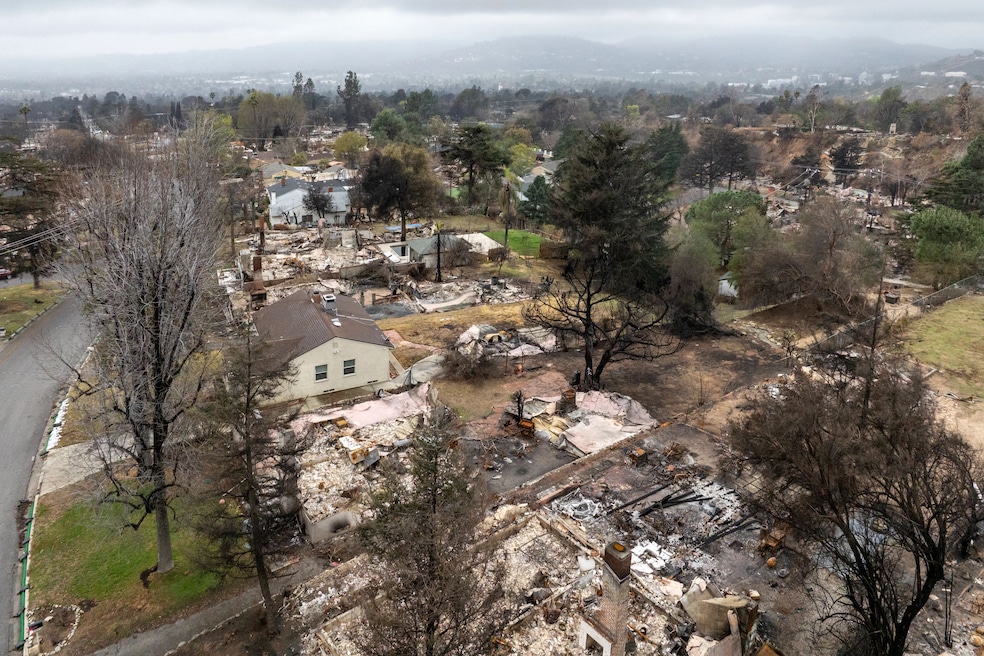California’s FAIR Plan, the state’s backup property insurer, is seeking an average 35.8% rate hike following January’s historic wildfires.
The privately funded insurance pool filed the dwelling policy rate hike request with the California Department of Insurance on Sept. 29. The filing is now subject to the insurance commissioner’s approval.
If approved, the rate hike is proposed to take effect April 1, according to the filing. Hilary McLean, a spokesperson for the FAIR Plan, said the increase wouldn’t be uniform for all customers.
“While [35.8%] represents the average increase sought across FAIR Plan dwelling policies, if this rate increase is approved, it does not mean every customer would see their premium rise by this amount,” she said in a statement. “The largest component of the increase is attributable to the wildfire portion of the premium.”
McLean said the 35.8% figure was derived using the latest guidelines set by the state’s insurance commissioner, such as approved catastrophe modeling and accounting for the cost of reinsurance. Using the prior rules “would have resulted in the FAIR Plan seeking an 80% rate increase,” she said.
“The FAIR Plan is working closely with the California Department of Insurance (CDI) to ensure its rates reflect the current risk portfolio, expenses and growth as the state’s insurer of last resort,” McLean added.
California's backup insurance plan has become mainstream
The FAIR Plan was originally established in 1968 as the insurer of last resort for homeowners who could not obtain insurance elsewhere. Though it was established by state legislation, it’s not a state agency. Instead, it’s “an insurance placement facility” comprised of all insurers licensed to write basic property insurance in the state.
Both state law and the FAIR Plan’s Plan of Operation require a dwelling rate filing every two years, according to McLean. Statute also maintains that the plan “must be sufficient to pay anticipated claims and expenses.”
While the plan was created to serve as a temporary backstop while residents sought coverage on the open market, its role has evolved in recent years as destructive wildfires have become the norm and driven big-name insurers from the state’s market.
Last year, the plan's policy count increased by 40% on a yearly basis. Its exposure to risk increased by 60%. As of March, the association was on track to hit those same numbers this year with close to 575,000 policies and nearly $600 billion worth of risk associated with them.
Homeowners are paying more for insurance
The average 35.8% increase also means that some homeowners could see an even greater jump in their premiums, according to Carmen Balber, executive director of advocacy group Consumer Watchdog.
"A 35% rate hike would be devastating to all the homeowners already paying too much for too little at the FAIR Plan. But it’s a punch in the face for survivors of the L.A. fires whose claims the Plan isn’t paying fairly today," Balber said in a statement. "Commissioner Lara must make the FAIR Plan meet its obligations to policyholders before approving any increase."
The rate request from the FAIR Plan also comes after the state's insurance department approved an emergency 17% temporary rate hike for State Farm, California's largest insurer, in May.
The decision allowed State Farm to increase its rates “with a full rate hearing scheduled to start at a date determined by the judge,” officials said at the time. It also required the company to receive an immediate $400 million cash infusion from its parent company.
In other words, State Farm will eventually have to prove its need for the emergency hike and explain how it plans to fix its finances.

